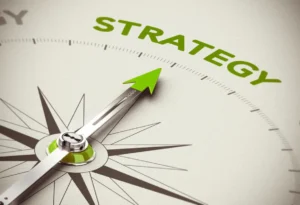Why Starting Early Is Important
Time is one of the most effective tools in retirement investing. The sooner you start saving and investing for retirement, the more you can benefit from compound growth. Through compound growth, your assets generate income, which you can then reinvest to earn even more. Over time, this effect can transform small, regular contributions into a substantial retirement savings account. Even if you can only invest a small amount initially, starting early gives your money more time to grow. This can mean a more comfortable retirement and less financial stress.
Clarify Your Retirement Goals
Before developing a sound retirement investment strategy, it’s crucial to understand your goals. Think about the kind of life you want to lead in retirement, where you want to live, and any major expenses, such as travel or healthcare. These factors will help you determine how much money to invest and how much risk to take. Setting specific goals can guide your investment approach and motivate you to stick with it. It also allows you to continually update your plan as your personal and financial circumstances change.
How to Choose the Best Investment Account
Using the right account is the best way to invest for retirement. 401(k) plans, individual retirement accounts (IRAs), and Roth IRAs are all examples of tax-advantaged accounts that can help you save faster by lowering your tax bill. Understanding how each account works is crucial, as they all have different restrictions, contribution limits, and tax advantages. Many employer-offered 401(k) plans allow you to make tax-free contributions, which can immediately reduce your taxable income. A Roth IRA, on the other hand, allows your assets to grow tax-free and enables you to withdraw them tax-free during retirement. With the right mix of accounts, you can maximize your retirement income.
Diversifying for Long-Term Stability
Diversification is a key principle of smart retirement investing. This means investing your money in different types of assets, such as stocks, bonds, and real estate, to mitigate risk. Stocks generally offer higher potential returns but also greater volatility, making them ideal for long-term growth. Bonds and other fixed-income assets, on the other hand, can provide stability and income, which is crucial as you approach retirement. Real estate can help you diversify your investments and generate more income. A diversified portfolio can help you weather market downturns and achieve stable long-term growth. This means your retirement savings aren’t overly dependent on the performance of any single investment.
Find the Right Balance Between Risk and Return
Finding the right balance between risk and return is crucial when investing for retirement. Younger investors can often take more risk because they have more time to recover from market downturns before retirement. However, as you approach retirement, it’s crucial to shift to safer investments to protect your investment returns. When necessary, this gradual shift, also known as “glide path” investing, safeguards your savings from significant short-term risks. Maintaining this balance over the long term is crucial for sustainable growth without jeopardizing financial stability.
Avoiding Emotional Decision-Making
One of the biggest risks to successful retirement investing is emotion. When the market falls, you might make rash decisions driven by fear; when the market rises, you might make rash decisions driven by greed. Selling your investments during a market crash will result in a loss. Chasing “hot” stocks can ultimately cost you too much and yield low returns. Successful investors know that markets always fluctuate, and the key to long-term success lies in sticking to a plan. By ignoring short-term market noise and focusing on your goals, you can make smart choices that will help you maintain financial security in the future.
Conclusion
Saving for retirement alone isn’t enough; you also need to develop a plan to build wealth, mitigate risk, and ensure you have enough to enjoy your retirement. You can start early, clarify your goals, allocate your assets, and adjust your strategy over time to build a retirement fund that supports your ideal lifestyle. Avoid making decisions based on gut instincts, and, if necessary, seek professional help to strengthen your strategy. With patience, discipline, and a clear strategy, you can ensure a secure financial future and peace of mind as retirement approaches.
FAQs
1. How much should I save for my retirement?
The amount you should save for retirement depends on your goals, but many experts recommend setting aside at least 15% of your salary annually.
2. When is the best time to start saving for retirement?
It’s best to start as early as possible. Even a small amount saved initially can grow significantly over time through compound interest.
3. What is the safest way to save for retirement?
Bonds and fixed-income investments are generally safer, but a balanced portfolio is often the best way to achieve consistent returns.
4. Should I invest in stocks for retirement?
Indeed, this is especially true if you have a significant amount of time left before retirement. Stocks likely offer a higher return, which is crucial for long-term growth.
5. Do I need a financial planner to help me with my retirement investments?
An advisor can be very helpful, especially if your financial situation is complex or you’re unsure how to plan. But not everyone needs an advisor.




